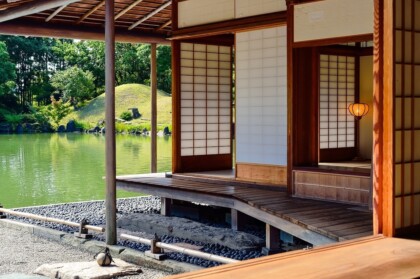Thinking about the outdoors in design and construction
by Martin Greenwood – Director, Shire Doors

Sidewalk appeal is an essential element of the architectural process, but do we always consider the green credentials of our designs?
When making a statement with the outer layer of a building, can we also demonstrate that sustainable construction is desirable, affordable, and practical?
Sometimes, it’s a case of inviting the weather into the building.
Come again?
Crazy as that sounds, there are many reasons why, for example, aluminum bifold doors are a great idea when considering the exterior aesthetic of a construction project – blending the inside with the outside while gleaning heat and providing ventilation.
Can we reinforce the sustainability and harmony of design by sensitively integrating with the surrounding environment?
Rainscreens
Rainscreen façades are an excellent way of creating uniformity of texture on the exterior of a building by integrating brick-built constructions into greener environments.
Building a wooden house in forestry conditions, for example, is a wonderful way of unifying the comforts of home with the wonders of nature. But if you’re looking for the durability of brick or stone, rainscreen cladding can help unite the two environments together.
However:
Most of us more frequently design buildings in urban settings. But we can still apply similar rules of thumb to urban jungles as we do to the actual wilderness.
Rainscreening isn’t just for aesthetic appeal – it plays a role in the insulating properties of the building as well.
Of course, these days we treat the insulation of the interior of a building as an absolute priority.
But rainscreening also presents the opportunity for passive heating and cooling by supplying ventilation through the siding; drawing stagnant air and moisture away from the waterproof membrane that protects the brick. This keeps the ambient warm or cool air from passing into or through the insulation beyond the exterior shell.
Inviting the weather indoors
Of course, we don’t want to attract the rain inside – we go to extreme lengths to avoid that. But one of the problems with sealing a building for water-tightness is that we tend to lock the outdoors away from the indoors.
During the 1950s Donald Hebb established – in his Arousal Theory – that we require an element of changing sensory stimulation in interior spaces to support brain function. During the 1980s, Roger Ulrich identified that hospital patients, convalescing in rooms with views of nature, had lower stress levels which boosted recovery rates; as opposed to those who just had brick walls to stare at.
So, large doors and windows are exterior features that can help stimulate the “happy building” vibe, while introducing additional heat and light if well insulated – resulting in less demand on the world’s resources during the lifetime of the building.
Bifold doors can replace an entire wall – bringing not just an ever-changing tableau of nature’s finery, but green credentials that help insulate when the outside is icy, and warmth when the autumnal sun beats through the glass.
And when it’s hot outside, you can open up the entire wall to ventilate your space, while blurring the line between the indoors and the outdoors.
And, of course, using natural daylight reduces the need for interior lighting during the day.
Never forget the rooftop
The rooftop represents valuable outdoor space, especially if you’re building in an urban environment with little surrounding greenery.
There’s precious square footage on the top of a building – perfect for functional areas such as rooftop gardens or decking. But rooftop landscaping also helps reduce energy consumption.
Including greenery to your roof design reduces the impact of direct sunlight in warmer climes, helping keep the building cooler and reducing the need for active cooling systems.
Additionally, adding a “green roof” with wildflowers, ferns, and grasses helps to support the ecosystem of pollinating insects which is especially needed in urban environments.
Solar paneling
Gathering energy from the sun doesn’t have to look ugly.
One of the problems with solar panels is that they’re so obtrusive – and while they make a statement of your intent to save the planet – they can be an eye-sore.
Thankfully:
There’s a growing market in disguised solar paneling.
Tesla Solar Roof Tiles look like traditional slate or clay tiles, but they have a hidden trick up their sleeve.
This new technology can be pricey. But, offset against the savings in utility bills over the lifetime of the building, you’ll find that they pay for themselves in around a decade.
But, there’s a catch.
The availability of affordable solar roof tiles relies on their demand.
The higher the demand, the cheaper they become; so the more we incorporate them into our sustainable construction projects, the more available and affordable these technologies become for everyone.
After all – we have just one planet – and we have a responsibility to use sustainable materials that support the environment.